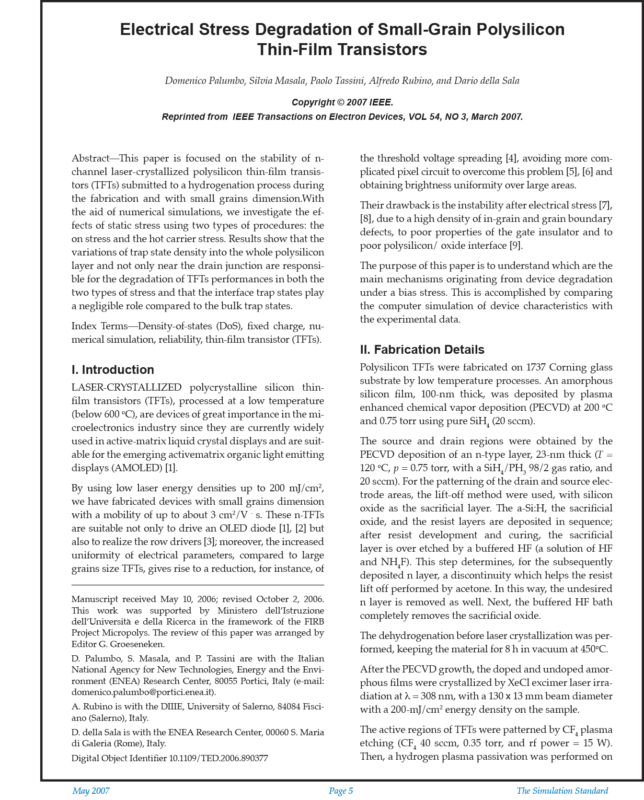Trapping Effects in the Transient Response of AlGaN/GaN HEMT Devices
José María Tirado, José Luis Sánchez-Rojas, and José Ignacio Izpura
Copyright © 2007 IEEE.
Reprinted from IEEE Transactions on Electron Devices,
VOL 54, NO 3, March 2007.
Manuscript received June 15, 2006; revised December 15, 2006. This work was supported in part by Junta de Comunidades de Castilla-La Mancha under Project PAC-05-001-2 and by Escuela Universitaria de Ingeniería Técnica Industrial (EUITI) de Toledo. The review of this paper was arranged by Editor M. Anwar.
J. M. Tirado is with the Department of Electrical, Electronic, Control and Communications Engineering, University of Castilla-La Mancha, 45071 Toledo, Spain (e-mail: JoseMaria.Tirado@uclm.es).
J. L. Sánchez-Rojas is with the Department of Electrical, Electronic, Control and Communications Engineering, University of Castilla-La Mancha, 13071 Ciudad Real, Spain (e-mail: JoseLuis.SanchezRojas@uclm.es).
J. I. Izpura is with the Department of Electronic Engineering, Universidad Politécnica de Madrid, 28040 Madrid, Spain (e-mail: izpura@die.upm.es).
Digital Object Identifier 10.1109/TED.2006.890592
Abstract
In this paper, the transient analysis of an AlGaN/GaN high-electron mobility transistor (HEMT) device is presented. Drain–current dispersion effects are investigated when gate or drain voltages are pulsed. Gate-lag and drain-lag turn-on measurements are analyzed, revealing clear mechanisms of current collapse and related dispersion effects. Numerical 2-D transient simulations considering surface traps effects in a physical HEMT model have also been carried out. A comparison between experimental and theoretical results is shown. The presence of donor type traps acting as hole traps, due to their low energy level of 0.25 eV relative to the valence band, with densities > 1e20 cm-3 (> 5e12 cm-2), uniformly distributed at the HEMT surface, and interacting with the free holes that accumulated at the top surface due to piezoelectric fields, accounts for the experimentally observed effects. Time constants close to 10 ms are deduced. Some additional features in the measured transient currents, with faster time constants, could not be associated with surface states.
Index Terms
AlGaN/GaN high-electron mobility transistor (HEMT), current collapse, device simulation, dispersion effects, donor traps, drain lag, gate lag, hole traps, surface states, trapping effects.
I. INTRODUCTION
The great interest raised by AlGaN/GaN high-electron mobility transistors (HEMTs) in the international semiconductor scientific community in general, for high-frequency, high-power, and high-temperature applications, has resulted in that an important number of researchers and centers in the world are nowadays mainly devoted to this new technology. However, there are still some problems in the production of GaN-based devices. The existence of dispersion effects observed in wide-bandgap devices has limited the initial expectations. The considerable list of advantages attributed to devices based on group-III nitrides in the last decade, due to their excellent properties, is partially limited by these negative effects. Great efforts are being dedicated to their understanding and their possible elimination or, at least, minimization.



